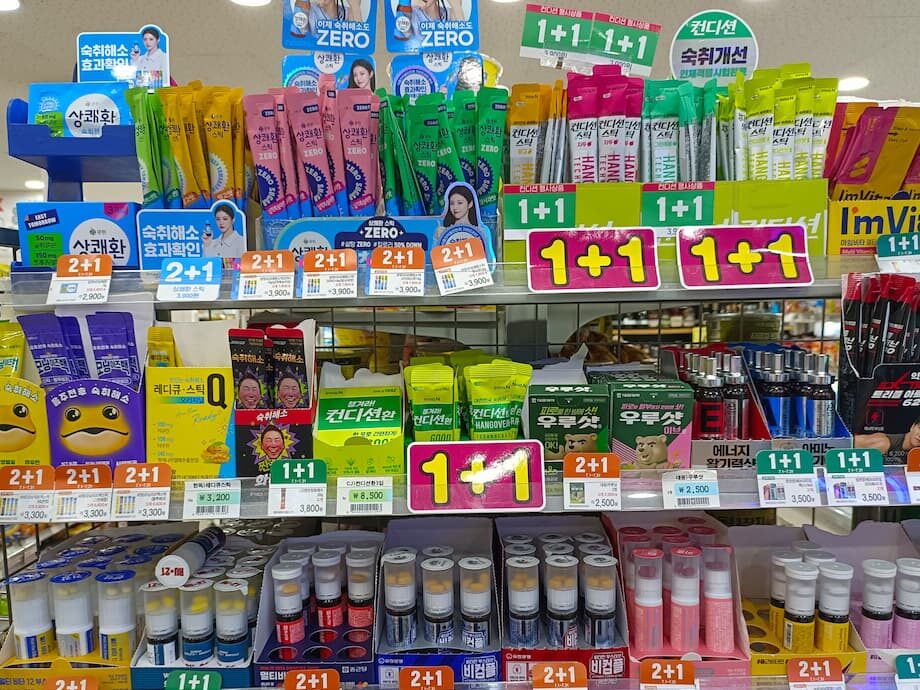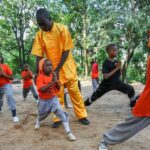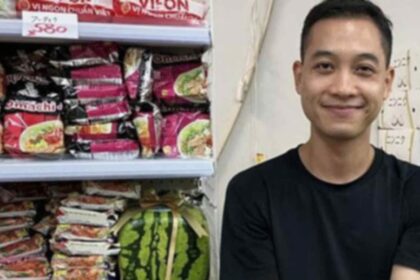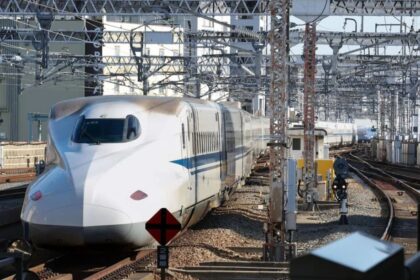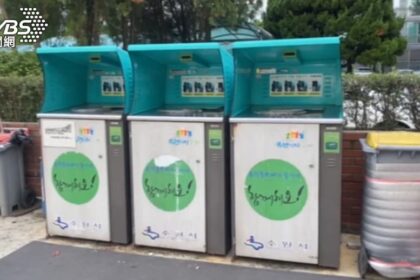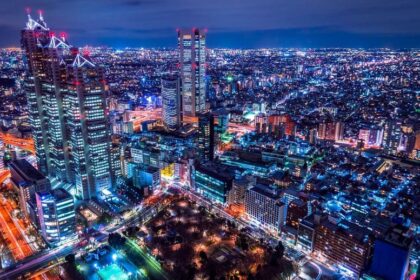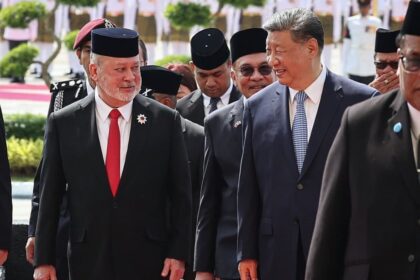Why the market grows while drinking slows
South Korea has turned the morning after into a business. Store shelves in Seoul now carry entire sections of hangover remedies, from tiny brown bottles to bright jelly sticks and pill packs. Market trackers estimate sales reached about 350 billion won in 2024, roughly 10 percent higher than the previous year. That surge arrives even as the country drinks less than it did a decade ago, with per person consumption trending downward since 2015 and shipments of beer and spirits still below pre pandemic levels. Corporate culture is changing, younger adults are choosing moderation, and yet the appetite for quick relief remains strong.
- Why the market grows while drinking slows
- From soup to shelf: tradition meets convenience
- Inside the ingredients: what is supposed to help
- New rules raise the bar for claims
- Competition and formats: drinks, sticks, films and now dual kits
- The business math and forecasts
- Going global with K culture
- Why consumers keep buying them
- Key Points
Convenience is part of the story. The nation’s high density of convenience stores, open at all hours, puts these products within easy reach before a night out and during the early commute after one. Culture fills in the rest. Drinking rituals are social, and so are the cures. Many consumers pick up extra products for friends, turning hangover prevention into a small gesture of care during the evening.
From soup to shelf: tradition meets convenience
For generations, relief meant a bowl of haejangguk, often made with napa cabbage, dried pollack or even congealed oxblood. That comfort still draws regulars to early opening restaurants. Today, traditional remedies sit beside modern formats. In Seoul’s Yangnyeongsi Market, the country’s largest traditional herb market, dried clusters of hovenia dulcis, known locally as heotgae or oriental raisin tree, are piled high. That same plant now appears in many packaged products sold nationwide. It is a striking example of how everyday convenience has absorbed older tastes and ingredients.
The retail ecosystem
Most purchases still happen offline. In 2022, about four out of every five hangover cure sales in South Korea were made at convenience stores, pharmacies and supermarkets. Online buying is gaining share as shopping habits shift, but the familiar counter next to the drinks cooler remains the market’s engine. Product variety is broad, and placement is strategic. Remedies sit near beer, soju and ready to eat food, which pulls in both pre drink planners and late night impulse buyers.
What people buy and when
Formats are diversifying quickly. Classic brown bottles remain popular, yet gummies, jellies, sticks and tablets are rising, especially among consumers in their 20s and 30s. Older shoppers still tend to prefer drinks. Survey data also suggest a split in timing. Slightly more than half of purchases are taken before drinking, aiming to head off the hangover, while the rest are consumed the morning after. Price matters too. A drink may cost around 3,000 to 4,000 won per bottle, while stick and pill products often come in at roughly half that price, which encourages group buying and sharing during social gatherings.
Inside the ingredients: what is supposed to help
Product labels promise relief through a familiar list of ingredients. Hovenia dulcis fruit extract appears often, sometimes alongside red ginseng, milk thistle, taurine and vitamin B complexes. Newer formulations add dihydromyricetin, L cysteine, prickly pear and electrolytes. The claims focus on three ideas. Support the liver as it breaks down alcohol. Reduce acetaldehyde, the toxic byproduct that contributes to headaches and nausea. Rehydrate and replenish nutrients after a late night.
Hovenia dulcis, from obscure tree to mainstay
Hovenia dulcis is frequently described as an age old Korean remedy, yet historians and medical researchers say that framing can be overstated. The plant appears in classical Chinese texts that influenced Korean medicine, but its modern role in hangover products took shape quite recently. Interest in hovenia dulcis for hangover relief grew in the early 1990s, first through patents in Japan and then through research in Korea. Laboratory studies in animals have suggested several effects. Extracts reduced blood alcohol levels in rats, fermented fruit vinegar lowered both alcohol and acetaldehyde, and some studies reported increased activity of alcohol dehydrogenase, a key enzyme that helps the body process alcohol. There are also findings that suggest possible protection of liver cells from alcohol related damage.
The limits of the evidence are just as important. Researchers have tested different parts of the plant, from fruit to stalk and seeds, and used varying extraction methods and dosages. Few well controlled human trials exist. A systematic review conducted by researchers in London found that hovenia dulcis fruit extract showed statistically significant benefits in some small human studies, but the quality of evidence was rated very low. The result is a familiar pattern in supplement science. Promising lab results, inconsistent human data and a need for more rigorous trials.
To understand why any of this might help, it is useful to step back to basic biology. The body breaks down alcohol in the liver in two major steps, first converting ethanol to acetaldehyde, then to acetate, which is less toxic and can be used as energy. The enzymes that do this work, mainly alcohol dehydrogenase and aldehyde dehydrogenase, vary in activity by person. When acetaldehyde builds up, headaches, flushing and nausea can intensify. Ingredients that claim to boost enzyme activity, scavenge reactive molecules or support liver function target this process. That does not make them magic bullets. Hydration, sleep and time are still the main drivers of recovery.
Dr Choi Goya, a researcher at the Korea Institute of Oriental Medicine, has studied the history and science of hovenia products. Before discussing the recent commercial wave, she has noted how new the modern trend really is.
Interest in hovenia dulcis for hangover relief only began in the early 1990s, starting with Japanese patents and followed by Korean research, she said.
Other common actives
Red ginseng has shown signs of reducing fatigue in small studies and appears in many Korean formulas. Milk thistle is associated with liver support, though evidence for hangover specific outcomes is mixed. Taurine and B vitamins are often included for energy and metabolism, yet strong proof that they ease hangovers is limited. Dihydromyricetin has generated buzz in the United States, but human data remain inconclusive. Korean pear juice may lower blood alcohol slightly if consumed before drinking, which could modestly reduce symptoms, but offers little help once a hangover starts. Ginger can ease nausea, though it does not directly target alcohol metabolism. IV drips and vitamin patches market quick fixes, yet unless someone is severely dehydrated, an IV is seldom better than fluids, food and rest, and transdermal patches lack solid evidence.
New rules raise the bar for claims
For years, companies could imply hangover benefits without presenting robust proof. That changed in January 2025 when new rules took effect. Regulators now require human trials if a product wants to claim it reduces hangover symptoms or speeds alcohol clearance. Firms must show measurable improvements, not just list popular ingredients. Authorities have also set a timetable. Companies that have not presented sufficient evidence face a cutoff for making hangover related claims later this year.
What validation looks like
Qualifying data can come from randomized human studies that track symptom scores, cognitive tests, and changes in blood alcohol and acetaldehyde over time. Methods must be transparent, dosages consistent and outcomes clinically meaningful. Literature reviews alone will not be enough unless they synthesize high quality human trials. The bar is higher than before, and that is by design.
Who is ready and who may struggle
Larger manufacturers moved early. Long standing brands have conducted human trials and submitted advertising claims for review. Smaller firms may find the cost of trials difficult, which could thin the number of products on shelves or push some to remove hangover language from labels and marketing. Regulators have warned that unproven claims could trigger penalties, including temporary business suspensions. As the rules bite, prices could drift upward if clinical evidence demands raise development costs, although competition and scale may keep popular items affordable.
Competition and formats: drinks, sticks, films and now dual kits
The category got its start with bottled drinks in the 1990s, led by market pioneers that still dominate cooler space. That legacy continues, yet the center of gravity is shifting toward portable formats. Jelly sticks from leading brands have posted rapid growth. New zero calorie drinks target shoppers who care about sugar. Chewable candies and gummies have become favorites for younger consumers because they are discreet, tasty and easy to share.
Pharmaceutical players are pushing into convenience stores with hybrid products. One recent example, a dual kit that pairs a small liquid shot with tablets in the cap, is designed to offer quick absorption from the drink and a vitamin rich follow up in pill form. The ingredients read like a greatest hits list for the category, from hovenia extract and milk thistle to taurine and B vitamins. The concept is clear. Simplify the routine by packing multiple modes into a single, easy to carry package.
New delivery tech lands on the shelf
Oral dissolving films are also arriving. These thin strips melt on the tongue without water and deliver actives through the oral mucosa. South Korean contract manufacturers have invested in film technology that promises faster uptake and better taste masking. The format costs more than standard gummies or pills because production equipment is specialized and volumes are smaller, but the convenience appeals to busy consumers and those who dislike swallowing tablets.
The business math and forecasts
Multiple market trackers point to consistent expansion. One analysis valued the South Korean hangover cure market at about 288 million dollars in 2022 and projects growth to more than 1 billion dollars by 2030, a double digit compound rate. Domestic tallies in won show a similar arc. Sales climbed above 300 billion won in 2022 and reached roughly 350 billion won in 2024. Offline retail channels still account for the clear majority of purchases, yet online gains speed each year as e commerce becomes routine for supplements and functional foods.
Product mix is evolving. Drinks and solutions accounted for almost half of sales in 2022, but solid formats have taken share since then, helped by portability and lower unit prices. Pre drink usage makes up just over half of consumption according to some estimates, which reflects a prevention mindset built into social gatherings. That practice reinforces repeat buying, since friends often distribute products ahead of the first round and then restock for the next outing.
South Korea sits inside a much larger global shift. The worldwide market was about 2 billion dollars in 2023 and is expected to more than triple by the early 2030s. Asia Pacific leads with a majority share, driven by dense urban nightlife, retail access and strong awareness of anti hangover solutions. North America and Europe are catching up as wellness oriented consumers seek preventive options that promise easier mornings.
Going global with K culture
Hangover cures have become part of the K goods export playbook. A flagship Korean brand first launched in 1992 now sells in around 15 countries, with particularly strong positions in China, Vietnam and Mongolia. Companies are hiring celebrity ambassadors and tailoring formulas to meet country specific ingredient standards. The same brands that built trust at home are now introducing jelly sticks and new flavors abroad as they chase growth in the United States, Japan and Europe. Localization matters. Firms adjust dosing, sweeteners and packaging to match local rules and tastes.
Startups outside Korea are climbing aboard. Korean founders in the United States have introduced products that borrow Korean formats such as jelly sticks, layering in ingredients familiar to American shoppers like DHM and B vitamins. Chinese tourists have long carried home Korean hangover jellies, boosting exports, and Japan continues to be a standout market where convenience store hangover drinks are already part of a well established routine.
Why consumers keep buying them
For many people, hangover products are about more than lab results. They are a small ritual, a sign that everyone wants to feel fine the next day. Young professionals often plan ahead and treat the purchase like a gift to the group, a modern add on to drinking etiquette.
Prof Joo Young ha, a cultural anthropologist at the Academy of Korean Studies, studies how food and shared habits shape social life. He sees the appeal among younger drinkers as a mix of practicality and social bonding.
They often buy multiple products in advance to share as gifts during drinking sessions, turning hangover prevention into part of the evening’s etiquette, he said.
Market analysts who track product launches note that South Korea and Japan are outliers compared with the rest of the world. In those two countries, the category is not a niche. It is mainstream retail tied closely to drinking culture.
They have mature and widely adopted hangover recovery product industries deeply tied to their respective drinking cultures, said Taeyoung Hwang, an analyst who follows global product launches.
On the science side, caution remains the rule. Lab findings are encouraging in places, but many human studies are small and methods differ widely. Regulators want clearer proof. That push may improve the quality of products that continue to claim hangover relief. It may also leave the market with fewer options. Consumers, for their part, are pragmatic. Price, taste and routine still drive many choices.
That pragmatism shows up in everyday stories. One Seoul office worker, 26 year old Lee So young, started buying hangover products in university and still keeps a few on hand.
I do not know if they really work, she said. They are cheap, and sometimes I do actually feel better. That is good enough for me.
Key Points
- South Korea’s hangover cure market reached about 350 billion won in 2024, up roughly 10 percent year over year, despite a long term decline in alcohol consumption.
- Products range from classic bottled drinks to gummies, jelly sticks, tablets and newer oral films, with solid formats gaining among younger consumers.
- Hovenia dulcis, or oriental raisin tree, is the signature ingredient, yet high quality human evidence for hangover relief remains limited.
- New rules that took effect in January 2025 require human trials to support hangover relief claims, with a deadline this year for companies to present data or drop such claims.
- Large brands have prepared with human studies, while smaller players may struggle with trial costs and stricter advertising reviews.
- Offline retail still dominates sales, though online channels continue to grow as shopping habits change.
- Analysts project the South Korean market could surpass 1 billion dollars by 2030, with Asia Pacific leading the global category.
- Korean brands are expanding overseas with localized formulas and celebrity marketing, while startups in the United States adopt Korean formats for new audiences.


